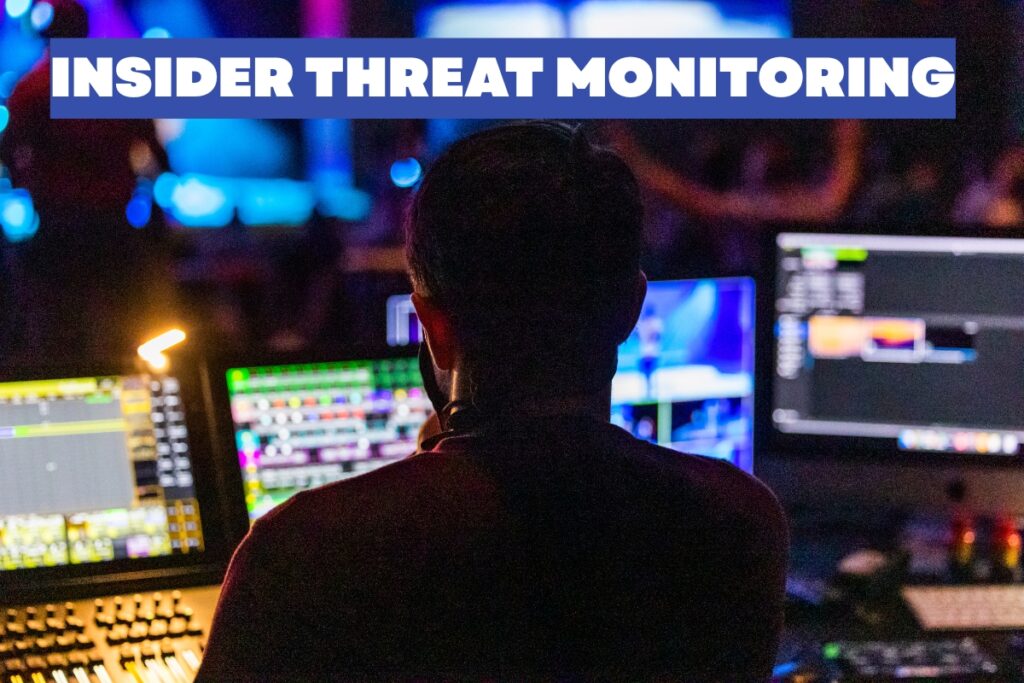We spend so much time worrying about hackers from Russia or China that we often miss the biggest security vulnerability walking through our front door every morning – our own employees. That executive with access to everything, the IT admin who controls your systems, or the seemingly loyal employee who just got passed over for promotion.
Each represents a potential insider threat that could devastate your business. The statistics are eye-opening: according to the Ponemon Institute’s 2023 Cost of Insider Threats Report, insider threats have increased 47% since 2020, with the average cost of incidents rising to $15.38 million.
Even more concerning, it takes organizations an average of 85 days to contain an insider incident. But what exactly constitutes an insider threat? Why are these incidents so dangerous, and how can your business develop effective awareness to protect against them?
Let’s dive into this critical but often overlooked aspect of cybersecurity.
What Is an Insider Threat in Cyber Security?

An insider threat refers to security risks that come from within your organization rather than external attackers. These threats stem from people who have legitimate access to your systems and data – employees, contractors, business partners, or anyone with authorized access to your network and sensitive information. The What is an insider threat cyber awareness question requires understanding that these aren’t just theoretical risks.
They’re real vulnerabilities that have caused catastrophic breaches at organizations of all sizes. Unlike external hackers who must break through your security defenses, insiders already have access, making detection particularly challenging. What makes insider threats especially dangerous is their privileged position.
These individuals know where valuable data is stored, understand internal security weaknesses, and their activities often appear legitimate to security systems. According to IBM’s Security Intelligence Index, insider threats are involved in approximately 60% of data breaches and typically cause more damage than external attacks because insiders can access the most sensitive information without triggering typical security alarms.
As explained in our data security vs cybersecurity article, protecting against insider threats requires both robust data security controls and comprehensive cybersecurity measures working together.
Why Insider Threats Are Critical Concerns for Your Business
The importance of an insider threat cyber awareness challenge becomes clear when considering the devastating impact these incidents can have on businesses:
Insider attacks cause average damages exceeding $15 million per incident according to the Ponemon Institute, with containment taking 85 days on average – far longer than external breaches. This extended detection time occurs because activities often appear legitimate, coming from trusted accounts with proper access credentials.
Professional services firms face heightened risks because employees routinely access extremely sensitive information:
- Law firms handle confidential client information and case strategies
- Healthcare practices maintain protected patient health records
- Financial services manage sensitive financial and personal data
- IT service providers have privileged access to client systems
Consider these realistic scenarios: A disgruntled law firm employee downloads confidential client files before joining a competitor. A healthcare worker accesses celebrity patient records, violating HIPAA. An accounting firm employee steals financial data for identity theft. Each represents common insider threat patterns that devastate businesses. Regulatory compliance frameworks increasingly address insider threats specifically.
HIPAA requires monitoring access to patient data, ABA ethics guidelines mandate protecting client information from both internal and external threats, and security frameworks like NIST 800-53 include specific controls for insider threat programs. The importance of IT services that address these internal risks becomes clear when considering the specialized security controls needed to detect unusual insider activity patterns.
Three Types of Insider Threats You Need to Know
Understanding the different categories of insider threats helps organizations develop targeted prevention strategies:
Malicious Insiders
These individuals intentionally misuse their access to harm the organization. Their motivations typically include:
- Financial gain through data theft or fraud
- Revenge for perceived mistreatment
- Competitive advantage by taking information to new employers
- Ideological beliefs or coercion by outside parties
According to the DTEX 2023 Insider Risk Report, 96% of organizations feel vulnerable to malicious insider threats, with disgruntled employees presenting the greatest concern.
Negligent Insiders
These well-meaning employees unintentionally create security risks through:
- Falling for phishing attacks that compromise their credentials
- Using weak passwords or sharing login information
- Mishandling sensitive information (emailing unencrypted files)
- Losing devices containing confidential data
The Ponemon Institute reports that negligent insiders are responsible for 62% of all insider incidents, making them the most common type of insider threat by far.
Compromised Insiders
These are legitimate users whose accounts have been taken over by attackers through:
- Credential theft via phishing or social engineering
- Malware that captures login information
- Brute force attacks against weak passwords
Once attackers gain control of insider credentials, they can operate with all the privileges of that user while appearing legitimate to security systems.
This is why network availability monitoring that can detect unusual access patterns is critical for identifying compromised accounts.
Warning Signs of Potential Insider Threats
Recognizing potential insider threats early requires awareness of both behavioral and technical indicators:
Behavioral Warning Signs
- Expressing unusual dissatisfaction or discussing revenge
- Sudden financial improvements or unexplained wealth
- Working odd hours without a clear reason
- Requesting access to information unrelated to job responsibilities
- Taking excessive interest in security measures or sensitive data
Technical Warning Signs
- Accessing systems or data outside normal job functions
- Downloading unusually large volumes of sensitive information
- Logging in at unusual times or from unexpected locations
- Attempting to bypass security controls
- Creating backdoor accounts or disabling security measures
Most insider threats show multiple warning signs before major incidents occur. The CISA Insider Threat Mitigation Guide notes that 92% of insider incidents are preceded by observable behavioral changes, creating opportunities for early intervention.
Effective monitoring combined with data backup and recovery in cloud computing ensures that even if insider incidents occur, your business can recover critical data and maintain operations.
The Devastating Impact of Insider Threats on Professional Services
Professional services firms face particularly severe consequences from insider threats:
- Loss of client trust and relationships when confidential information is breached
- Professional malpractice liability and lawsuits from affected clients
- Regulatory fines and sanctions for compliance violations
- Competitive disadvantage when strategic information reaches competitors
- Reputation damage that can take years to rebuild or result in business closure
For law firms, healthcare practices, and financial services, the impact extends beyond monetary losses to core professional ethics and obligations. A single insider breach can destroy decades of built trust and client relationships.
The American Bar Association reports that 25% of law firms have experienced data breaches, with insider threats representing a significant portion of these incidents. For firms handling high-value transactions or sensitive litigation, the damage from insider threats can be existential.
How to Prevent and Detect Insider Threats
Protecting against insider threats requires a comprehensive approach combining technical controls, policies, and human awareness:
- Implement the principle of least privilege – Grant employees access only to what they need for their specific roles
- Deploy monitoring systems – Track access to sensitive data with alerts for unusual activities
- Require multi-factor authentication – Prevent compromised credentials from providing immediate access
- Conduct thorough background checks – Verify trustworthiness of employees with access to sensitive data
- Establish clear security policies – Define acceptable use and consequences for violations
- Provide regular security awareness training – Educate employees about proper data handling
- Create confidential reporting processes – Allow employees to report suspicious activities
- Implement data loss prevention tools – Block unauthorized transfer of sensitive information
As noted in our 10 reasons why cybersecurity is important article, these layered security measures protect not just against external threats but critical insider risks as well.
Essential Components of Insider Threat Awareness Training
Effective cyber awareness: what an insider threat training must include:
- Clear definition and real-world examples of insider threats showing consequences
- Explanation of acceptable use policies and proper data handling procedures
- Training on recognizing and reporting suspicious insider activities
- Guidance on protecting credentials and devices
- Industry-specific scenarios relevant to your business context
- Regular refresher training keeps awareness current
- Testing and assessments verifying comprehension
According to SANS Security Awareness, organizations with comprehensive security awareness programs experience 70% fewer security incidents. Well-trained employees transform from potential security risks into active defenders who can identify and report suspicious activities.
The key is making training engaging and relevant rather than dry compliance exercises. Employees must understand both the “what” and “why” of security practices to effectively apply them.
Insider Threat Monitoring: Balancing Security and Privacy

Effective insider threat monitoring requires balancing security needs with employee privacy concerns:
- Implement monitoring that focuses on data and system access patterns rather than personal activities
- Be transparent about monitoring policies so employees understand what’s being observed
- Focus monitoring on high-risk activities like accessing confidential information
- Ensure monitoring serves legitimate security purposes with appropriate oversight
- Comply with privacy laws and employment regulations governing workplace monitoring
The goal is to detect security anomalies while maintaining a healthy workplace culture based on trust.
As highlighted in our network firewall security benefits discussion, proper configuration of security monitoring creates protection without creating an atmosphere of distrust.
How Rekall Tech Helps Businesses Address Insider Threats
Rekall Tech’s approach to helping clients manage insider threats includes:
- Implementing access controls and monitoring systems to track sensitive data access
- Providing employee security awareness training addressing insider threat recognition
- Establishing security policies and procedures specific to insider risks
- Deploying advanced security tools to detect suspicious activities
- Conducting regular security assessments to evaluate insider threat vulnerabilities
- Offering compliance-aligned security that meets regulatory requirements
- Providing ongoing monitoring and support to maintain the security posture
Our understanding of unique insider threat challenges facing law firms, healthcare practices, and professional services ensures that your most sensitive data receives appropriate protection from both external and internal threats.
Frequently Asked Questions
What are examples of insider threats?
Examples include employees stealing data before leaving for competitors, staff falling for phishing attacks, compromising their credentials, system administrators abusing privileges to access sensitive information, and contractors planting malware or backdoors in systems.
How can you tell if someone is an insider threat?
Warning signs include accessing data unrelated to job duties, working unusual hours without explanation, downloading large amounts of data, showing sudden financial improvements, expressing unusual dissatisfaction, or attempting to bypass security controls.
What is the most common type of insider threat?
Negligent or accidental insiders are the most common, representing over 60% of incidents. These are well-meaning employees who create security risks through mistakes like falling for phishing attacks or mishandling sensitive data.
How do you report an insider threat at work?
Report concerns to your security team, IT department, or management through established reporting channels. Many organizations have confidential hotlines or reporting systems for security concerns that protect the identity of reporters.
Wrapping Up
Understanding what an insider threat in cyber awareness is just the beginning. Implementing comprehensive insider threat protection requires a strategic combination of technical controls, clear policies, continuous monitoring, and employee awareness training. For professional services firms handling sensitive client information, the stakes are particularly high. One insider incident can destroy client trust, trigger regulatory penalties, and create significant liability.
Ready to protect your business from both external and insider threats?
Contact Rekall Tech today for a comprehensive security assessment that addresses the full spectrum of cybersecurity risks facing your organization, including the critical but often overlooked insider threat dimension.


